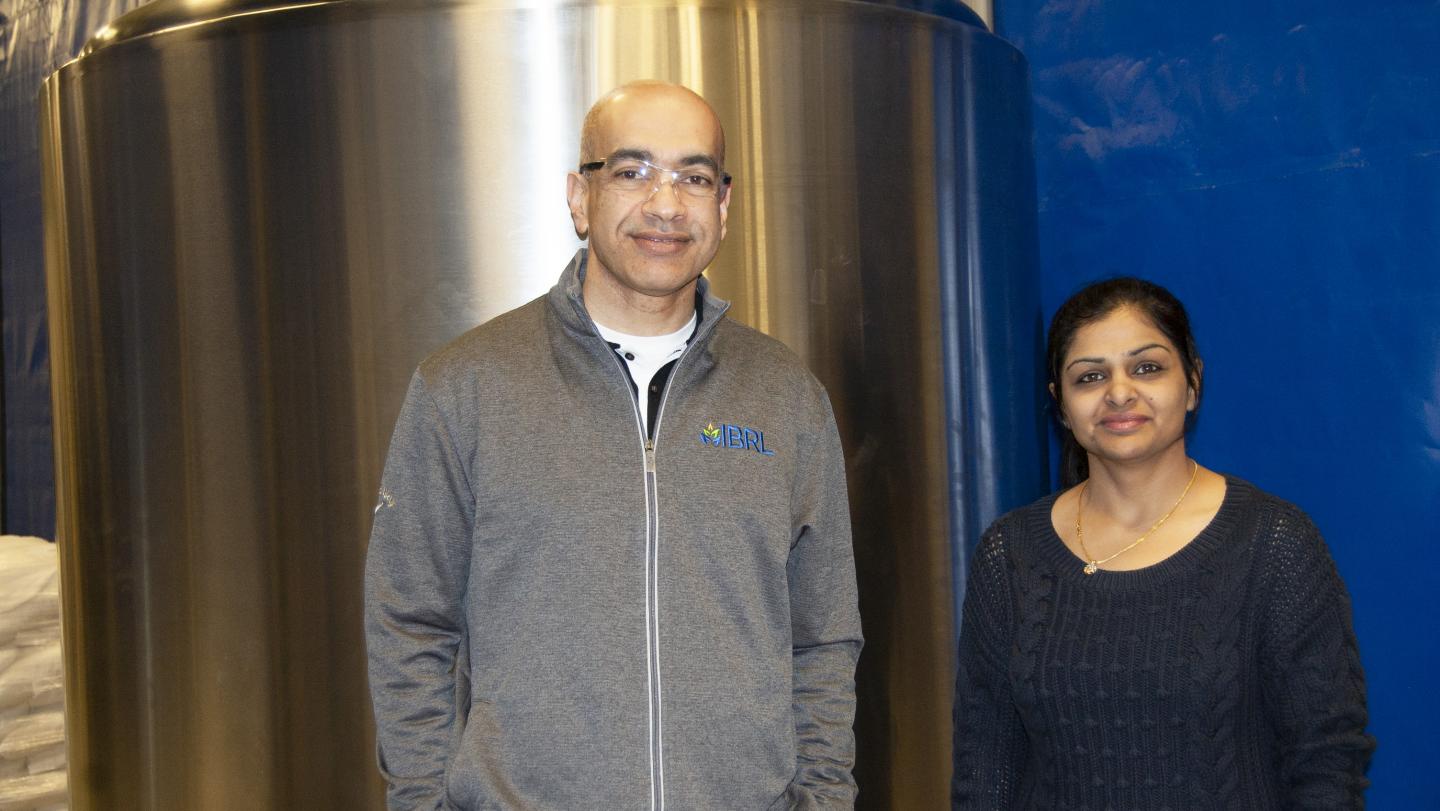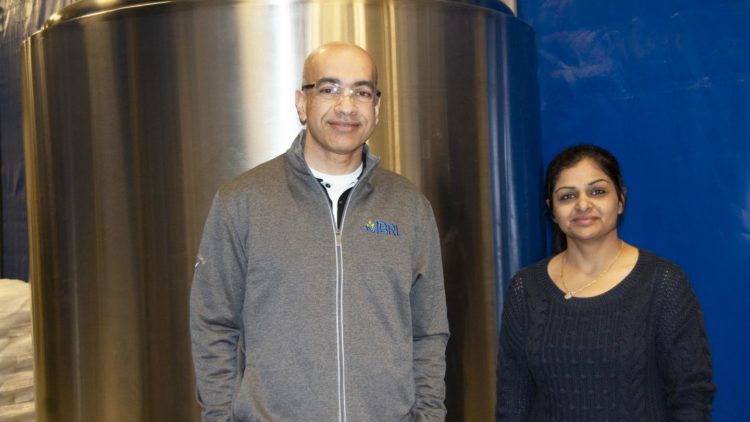
Credit: Marianne Stein
URBANA, Ill. – Dried distiller’s grains with solubles (DDGS), a co-product from corn ethanol processing, is commonly used as feed for cattle, swine and poultry. However, DDGS contains more phosphorus than the animals need. The excess ends up in manure and drains into the watershed, promoting algae production and eventually contributing to large dead zones in the Gulf of Mexico.
Removing excess phosphorus from DDGS before it becomes feedstuff could alleviate the problem. A new study from University of Illinois examines the best way to recover phosphorus as a co-product, which can then potentially be used as fertilizer for corn and soybean production.
“A lot of phosphorus is in the corn itself. When corn is processed, you get different products. Some of it is fed in animal diets, which already contain plenty of phosphorus. So the additional phosphorus comes out in the manure and leaches into the groundwater,” says Vijay Singh, the study’s co-author. Singh is professor of agricultural and biological engineering and director of the Integrated Bioprocessing Research Laboratory (IBRL) at U of I.
“We asked, can we do something in the process itself to recover this phosphorus, and put it back on the land as fertilizer? It’s like a circular economy,” he adds.
The research is part of a multi-pronged project spanning several departments in the College of Agricultural, Consumer and Environmental Sciences at U of I. The project is funded by a National Science Foundation grant under the Innovations at the Nexus of Food, Energy and Water Systems (INFEWS) umbrella.
Ankita Juneja, postdoctoral research associate in the Department of Agricultural and Biological Engineering, is the study’s lead author. She explains researchers first looked at how phosphorus flows through the production facility.
“We started with a model and estimated the flow of phosphorous in the entire diagrammed plant. Then we determined where the maximum concentration of phosphorus occurs, which will help us recover it economically,” she says.
The researchers were able to recover 80% to 90% of the phosphorus through a simple process of increasing the alkalinity of thin stillage and adding calcium chloride, followed by stirring the product for five minutes in a continuous stir reactor.
Juneja explains that the goal was not to remove all phosphorus because some is needed as nutrients in the feedstuff.
“The animal food requirement of phosphorus in DDGS is 3 to 4 milligrams per gram of DDGS. Previously, the DDGS had about 9 to 10 milligrams per gram. So the rest was all excess, which would get into the manure. We were able to reduce it down to 3.25 milligrams per gram, which is in the range of what the animals actually need.”
Removing phosphorus also drains protein from the DDGS, but Juneja says the study’s recovery process was optimized to ensure that the amounts of protein and phosphorus left in the DDGS were calibrated to meet-but not exceed-requirements for animal feed.
The product that is recovered through this procedure is in the form of a solid precipitate or paste, which contains about 60 to 70% water. It can be dried and eventually used as fertilizer, though the study does not address that process. Singh says that is currently being tested by scientists in the U of I Department of Crop Sciences.
“We have clearly shown that you can recover this phosphorus from a processing plant so that it doesn’t go in different co-products such as animal feed,” he notes.
The researchers evaluated both the technical and economic aspects of the recovery process. While processors do have to invest in new equipment to perform the separation, there is the potential for selling the recovered co-product as P fertilizer for corn and soybeans.
“We did the economic analysis of how much it would cost to add the recovery section in an existing dry grind plant: how much it would cost in terms of fixed cost; how much it would cost in terms of operating costs every year; and how much extra revenue could be generated by producing this extra co-product, which can be used as fertilizer or other applications,” Juneja explains.
“We found that the additional investment was $5.7 million in an existing dry grind plant that produces 40 million gallons of ethanol a year. The amount of added revenue is a little less than a million dollars each year,” she adds.
Plants are not currently implementing these practices, but processors are very interested in learning about the study’s findings, Singh notes.
“They want to know how to do it. Even just providing them with information on how phosphorus flows in their plant is a lot of value. And then giving them strategies to recover it; that is also of value to them,” he adds.
Singh says this is the second of three studies he and Juneja are conducting on phosphorus recovery as part of the INFEWS project.
“We are looking at three different refineries within the Upper Sangamon Watershed,” he says. “In this watershed, there are many different processing plants because Illinois has lot of bean and corn processing.”
The first study looked at corn wet milling plants, where corn is converted to starch for making high fructose corn syrup, and the third study will focus on soybean processing plants.
###
The article, “Recovering the phosphorus as a coproduct from corn dry grind plants: A techno-economic evaluation” is published in Cereal Chemistry. [doi.org/10.1002/cche.10260]
Authors include Ankita Juneja and Vijay Singh, Department of Agricultural and Biological Sciences, and Roland Cusick, Department of Civil and Environmental Engineering, University of Illinois.
The first study, “Techno?economic feasibility of phosphorus recovery as a coproduct from corn wet milling plants,” was also published in Cereal Chemistry. [doi.org/10.1002/cche.10139]
Authors include Ankita Juneja, Navneet Sharma, Roland Cusick, and Vijay Singh.
Funding for both studies was provided by the National Science Foundation, Division of Earth Sciences.
Media Contact
Marianne Stein
[email protected]
217-244-2313
Original Source
https:/
Related Journal Article
http://dx.





